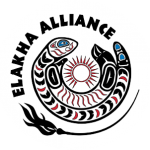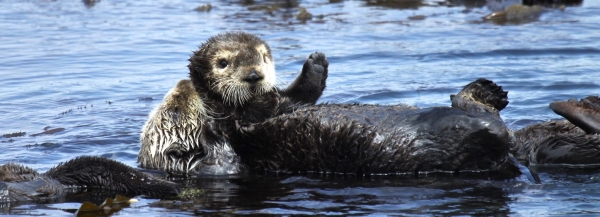PORTLAND, Oregon – Under a directive from Congress, the U.S. Fish and Wildlife Service evaluated the feasibility of reintroducing sea otters to their historical range along the West Coast of the contiguous United States. The Service focused the assessment on northern California and Oregon, where potential sea otter reintroduction would have the greatest conservation value.
The Service’s assessment indicates reintroduction is feasible, but it does not provide a recommendation as to whether sea otter reintroduction should take place. Additional information and stakeholder input would be needed to help inform any future reintroduction proposal if the initiative moves forward.
Sea otters once lived across the north Pacific Rim from the northern islands of Japan to Baja California. By 1911, this heavily hunted species was nearly extinct and survived in only a few small disjunct populations. After slow population recovery and past reintroduction efforts, sea otters now again inhabit portions of their historical range. However, sea otters remain absent from the contiguous Pacific Coast, with the exception of central California, one island in southern California, and the northern coast of Washington. Sea otters in California are listed as threatened under the Endangered Species Act.
As a keystone species, sea otters play a fundamental role in the ecological health of nearshore ecosystems. Sea otters eat sea urchins and other marine grazers, which helps keep kelp forests and seagrass beds in balance. Their presence in the ocean enhances biodiversity, increases carbon sequestration by kelp and seagrass, and makes the ecosystem more resilient to the effects of climate change. Additionally, reintroduction could increase the genetic diversity of recovering sea otter populations and contribute to the conservation of the threatened southern sea otter.
“If sea otters are reintroduced to northern California and Oregon, it would benefit both otters and the nearshore marine ecosystem,” said Craig Rowland, acting state supervisor for the Service’s Oregon office. “Additional work is needed to evaluate the possible impacts of a potential reintroduction as well as measures to offset these impacts. While we anticipate an overall socioeconomic benefit to coastal communities, we also recognize that some local shellfish fisheries could be affected.”
In the consideration of sea otter reintroduction, the Service’s assessment recommends stakeholder engagement in the identification of potential reintroduction sites and small-scale experimental reintroductions as next steps. If there is a move to formally propose the reintroduction of sea otters, the Service would initiate a public review process under the National Environmental Policy Act.
 The Elakha Alliance, an Oregon nonprofit group, separately evaluated the feasibility of bringing sea otters back to the Oregon Coast. That comprehensive report is available here. The Service partly funded this study. The feasibility assessment by the Service is intended to be read as a companion to the Elakha Alliance study, but it expands the geographic area under consideration in response to the request from Congress.
The Elakha Alliance, an Oregon nonprofit group, separately evaluated the feasibility of bringing sea otters back to the Oregon Coast. That comprehensive report is available here. The Service partly funded this study. The feasibility assessment by the Service is intended to be read as a companion to the Elakha Alliance study, but it expands the geographic area under consideration in response to the request from Congress.
For more information and a copy of our report, please visit: https://www.fws.gov/project/sea-otter-feasibility-assessment
 The mission of the U.S. Fish and Wildlife Service is working with others to conserve, protect, and enhance fish, wildlife, plants, and their habitats for the continuing benefit of the American people. For more information on our work and the people who make it happen, visit www.fws.gov. Connect with our Facebook page at www.facebook.com/usfws, follow our tweets at www.twitter.com/usfwshq , our YouTube Channel at http://www.youtube.com/usfws
The mission of the U.S. Fish and Wildlife Service is working with others to conserve, protect, and enhance fish, wildlife, plants, and their habitats for the continuing benefit of the American people. For more information on our work and the people who make it happen, visit www.fws.gov. Connect with our Facebook page at www.facebook.com/usfws, follow our tweets at www.twitter.com/usfwshq , our YouTube Channel at http://www.youtube.com/usfws


 (1).png)